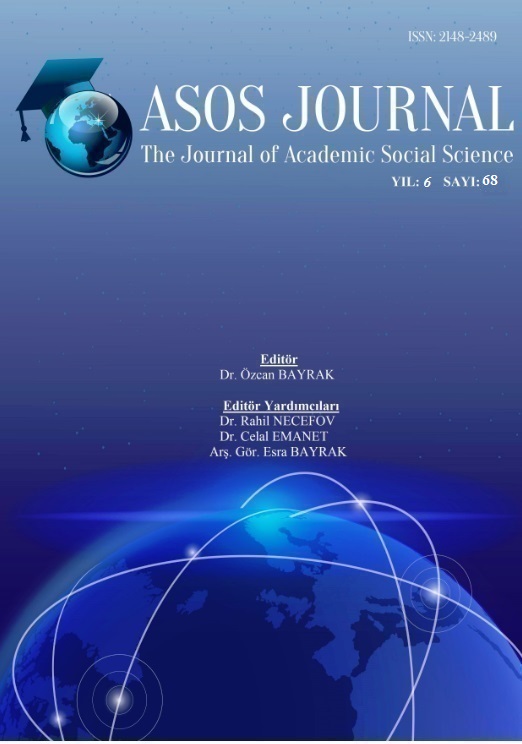Author :
Abstract
Bu çalışmada; arazi toplulaştırmasının Türkiye’de başladığı 1961 yılından 2017 yılı Aralık ayına kadar toplulaştırma alanında kalan ve uygulayıcı kuruluşun talebi uyarınca Maliye Bakanlığı Milli Emlak Genel Müdürlüğü’nce tahsis edilen hazinenin özel mülkiyetindeki taşınmazlar ile uygulama sonrasında hazineye iade edilen taşınmazların analiz ve değerlendirmeleri yapılmıştır. Milli Emlak Otomasyon Projesi (MEOP) programı ile Gıda, Tarım ve Hayvancılık Bakanlığı kurumsal internet sayfasından alınan veriler karşılaştırılmıştır. Toplulaştırma alanındaki hazine taşınmazlarının kullanımının uygulayıcı kuruluş ve hazine üzerine etkileri ile yaşanan sorunlar tespit edilmiş ve öneriler sıralanmıştır. Türkiye’de 1961-2015 yılları arasında 5.082.785 ha alanda arazi toplulaştırmasının gerçekleştirildiği, bu alanda toplulaştırmaya alınan hazinenin özel mülkiyetindeki taşınmazların 147.667 ha olduğu ve hazine taşınmazlarının arazi toplulaştırma alanında kalan taşınmazların 2015 yılı itibariyle % 3’ünü kapsadığı, toplam hazine taşınmazlarının ise % 0,7’sinin arazi toplulaştırmasına tahsis edildiği tespit edilmiştir. Hazine taşınmazlarıyla ilgili yaşanan sorunların başında zilyetliğe dayalı açılan davalar sonucunda mahkemelerce şahıslar veya hazine lehine verilen kararların, mahkemelerce konulan ihtiyati tedbir şerhlerinin dikkate alınmaması nedeniyle, tapuda uygulama imkanının olmamasından ve hazinenin paylı mülkiyete konu edilmesinden kaynaklandığı, Kanun’da yapılacak yasal düzenlemeler ile bu davaların önüne geçilebileceği, diğer bir sorunun da toplulaştırma proje sınırlarının yanlış uygulanması sonucu oluşan mükerrer tapular olduğu, yapılacak arazi toplulaştırma çalışmalarında teknik ve idari yönlerden gerekli dikkat ve özenin gösterilmesi halinde sorunun giderilebileceği öngörülmüştür. Arazi toplulaştırma alanında kalan hazine taşınmazlarının, ortak tesisler için ayrılan ancak katılım payından karşılanamayan kısmının hazine taşınmazlarından karşılanması veya paylı mülkiyete konu edilmesi ile uygulayıcı kuruluşun kamulaştırma maliyetine katlanmasına engel olunması yönünden toplulaştırmanın maliyetinin azalmasına neden olunduğu ve kamuya yüklenecek külfetin önüne geçildiği, yerinde korunması gereken tesislerin sahibinin onayıyla hazine ile paylı mülkiyete konu edilmesinin projenin uygulanmasını kolaylaştırdığı ve toprağı veya yeter toprağı olmayan çiftçinin topraklandırılmasının hazine taşınmazlarından karşılandığı, yapılan arazi toplulaştırmaları ile de hazine taşınmazlarına yönelik yapılan işgallerin önüne geçildiği ve taşınmazların kayıt altına alınmasının sağlandığı ancak toplulaştırma alanında kalan hazine taşınmazlarına karşılık eş değerde taşınmaz verilip verilmediği ve hangi amaçlarda kullanıldığı konusunda hazinece yapılan denetim mekanizmasının yeterli olmadığı sonucuna varılmıştır.
Keywords
Abstract
In this study, the analysis and evaluations of the immovable property belonging to the Treasury which was allocated by the Ministry of Finance, General Directorate of National Real Estate in accordance with the request of the implementing institution as well as those returned to treasure after application, which were in the area of consolidation from 1961, when land consolidation started in Turkey, until December of 2017, were carried out. Data obtained from the National Real Estates Automation Project (MEOP) program and from the website of the Ministry of Food, Agriculture and Livestock are compared. The effects of the use of treasury real estate in the area of consolidation on the implementing organization and treasury and the encountered problems are identified and the recommendations are listed. It has been identified that between 1961 and 2015, 5,082,785 hectares of land consolidation was carried out in Turkey, that consolidated lands in treasury private property in this area were 147,667 hectares and as of 2015, treasury real estate consisted of 3% of the lands that remained in the consolidation area, and that 0.7% of total treasury real estate was allocated to land consolidation. The problems encountered with treasury real estate are mainly due to the fact that the judgments given by the courts in favor of persons or the treasury as the result of the lawsuits based on possession are not implementable at title registry offices due to the fact that the precautionary quotes are not taken into account and the treasure is subjected to shared property. These lawsuits can be prevented by legal regulations to be made. Another problem is duplicate title deeds that result from misapplication of consolidation project boundaries. It has been envisaged that these problems can be solved if necessary attention and care is given to technical and administrative aspects in the land consolidation works to be done. It has been concluded that the cost of consolidation of treasury real estate remaining in the field of land consolidation is reduced and the burden to be borne by the public is prevented as portions that are reserved for common facilities but cannot be covered for participation are covered by treasury real estate or are subject to public property and as such, the cost of expropriation of the implementing organization is prevented. The fact that the facilities which must be protected on site are subject to shared property with the treasury with the approval of the owner makes the implementation of the projects easier. The allocation of land to farmers without land or sufficient land is covered by treasury real estate. With land consolidation, the occupation of the treasury real estate is prevented and the immovable properties are recorded. However, the treasury control mechanism is not sufficient for whether treasury real estate in the area of consolidation is equivalent to real estate given and for which purpose it is used.





